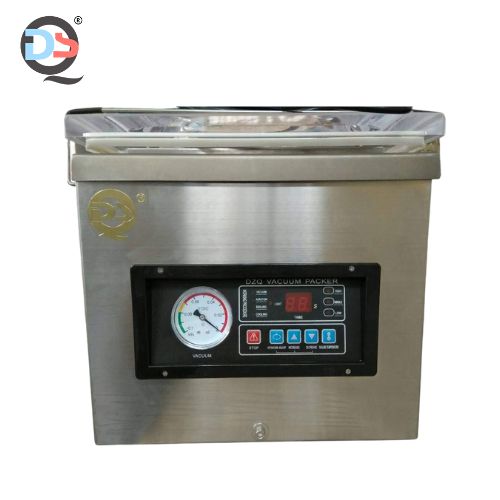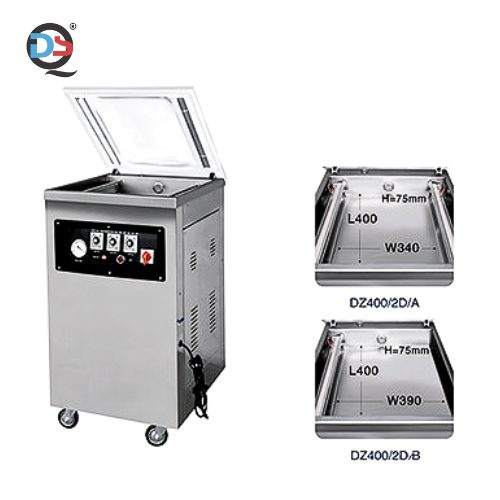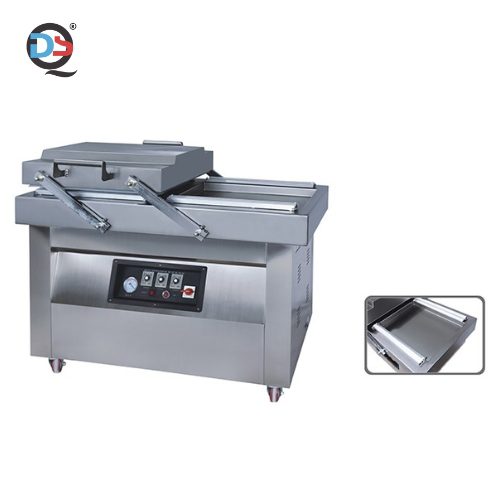Types of Vacuum Packing Machines
What Is Vacuum Packing Machine
A vacuum packing machine, also known as a vacuum sealing machine, is a machine used for remove air from a package or container and create a vacuum seal. It is commonly used in food packaging to extend the shelf life of perishable items and prevent spoilage.
What are the different types of vacuum machines
There are several different types of vacuum packing machines available, each designed for specific purposes and varying levels of usage. Here are some common types:
1. Single Chamber vacuum machine
2. Double chamber Vacuum Machine
3. Vacuum Packaging Machine Table Top Mini
What are the benefits of using a vacuum packing machine?
Using a vacuum packing machine offers several benefits in various industries and applications. Here are some key advantages:
1. Extended Shelf Life: Vacuum packing removes air from the package, slowing the spoilage process. By reducing the oxygen level, bacteria, mold, and yeast growth is inhibited, extending the shelf life of perishable items such as food products.
2. Freshness and Quality Preservation: Vacuum sealing helps maintain the contents’ freshness, flavor, and nutritional value. It prevents exposure to oxygen, which can cause oxidation and degradation of certain substances, ensuring that the product remains in optimal condition for longer.
3. Prevention of Freezer Burn: Vacuum packing is particularly useful for freezing food items. Removing the air and sealing the package tightly minimize the risk of freezer burn. Freezer burn occurs when moisture evaporates from the food and forms ice crystals, deteriorating texture and taste.
4. Efficient Use of Storage Space: Vacuum packing reduces the volume of the packaged items by eliminating excess air. Vacuum Packing machines enables more efficient storage space utilization, making organizing and storing items in refrigerators, freezers, or pantry shelves easier.
5. Improved Hygiene and Food Safety: Vacuum packing reduces the risk of cross-contamination by providing a sealed and hygienic environment for packaged items. It prevents the transfer of odors and flavors between different products, maintaining their characteristics.
6. Enhanced Product Presentation: Vacuum-sealed packages often have a neat and professional appearance that can appeal to consumers. The transparent packaging allows for easy product visibility, making purchasing more enticing.
7. Cost Savings: Vacuum packing can help reduce food waste and extend the usability of ingredients or products. By preventing spoilage and maintaining quality, businesses and households can save money by reducing the need for frequent replacements. Overall, vacuum packing machines offer numerous benefits, including extended shelf life, preservation of quality, efficient storage, and enhanced food safety. These advantages make vacuum packing valuable in various industries, including food processing, hospitality, retail, and more
What are some of the factors to consider when choosing a Vacuum Machine ?
When you are choosing a vacuum packing machine, several factors must be considered to ensure that it meets your specific needs and requirements. Here are some important factors to consider:
1. Usage Volume: Determine the packaging volume you expect to handle regularly. If you have high packaging requirements, you may need a more robust and heavy-duty machine, such as a chamber vacuum sealer, to handle larger volumes efficiently. An external vacuum sealer might be sufficient for occasional home use or lower volumes.
2. Packaging Size and Type: Consider the size and type of items you plan to package. Suppose you need to package larger items or irregularly shaped products. In that case, you might require a machine with a larger sealing area or a nozzle vacuum sealer that can handle various shapes and sizes. Tray vacuum sealers are suitable for packaging items in trays or containers.
3. Sealing Strength and Quality: Evaluate the sealing strength and quality of the machine. A strong and reliable seal is crucial for maintaining the vacuum and preserving the contents. Look for machines that offer adjustable sealing parameters to accommodate different packaging materials.
4. Automation and Control Features: Consider the automation and control features you require. Some machines offer manual controls, while others have programmable settings for vacuum strength, sealing time, and other parameters. Automated machines can streamline the packaging process and offer consistent results.
5. Maintenance and Durability: Assess the maintenance requirements and durability of the machine. Look for easily clean and maintained models with removable components for cleaning or replacement. Consider the build quality and materials used to ensure the machine can withstand regular use without breaking down.




